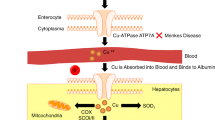Abstract
Chloride channels perform important roles in the regulation of cellular excitability, in transepithelial transport, cell volume regulation, and acidification of intracellular organelles. This variety of functions requires a large number of different chloride channels that are encoded by genes belonging to several unrelated gene families. The CLC family of chloride channels has nine known members in mammals that show a differential tissue distribution and function both in plasma membranes and in intracellular organelles. CLC proteins have about 10–12 transmembrane domains. They probably function as dimers and may have two pores. The functional expression of channels altered by site-directed mutagenesis has led to important insights into their structure–function relationship. Their physiological relevance is obvious from three human inherited diseases (myotonia congenita, Dent’s disease and Bartter’s syndrome) that result from mutations in some of their members and from a knock-out mouse model.
Similar content being viewed by others
Author information
Authors and Affiliations
Rights and permissions
About this article
Cite this article
Jentsch, T., Friedrich, T., Schriever, A. et al. The CLC chloride channel family. Pflügers Arch 437, 783–795 (1999). https://doi.org/10.1007/s004240050847
Issue Date:
DOI: https://doi.org/10.1007/s004240050847




